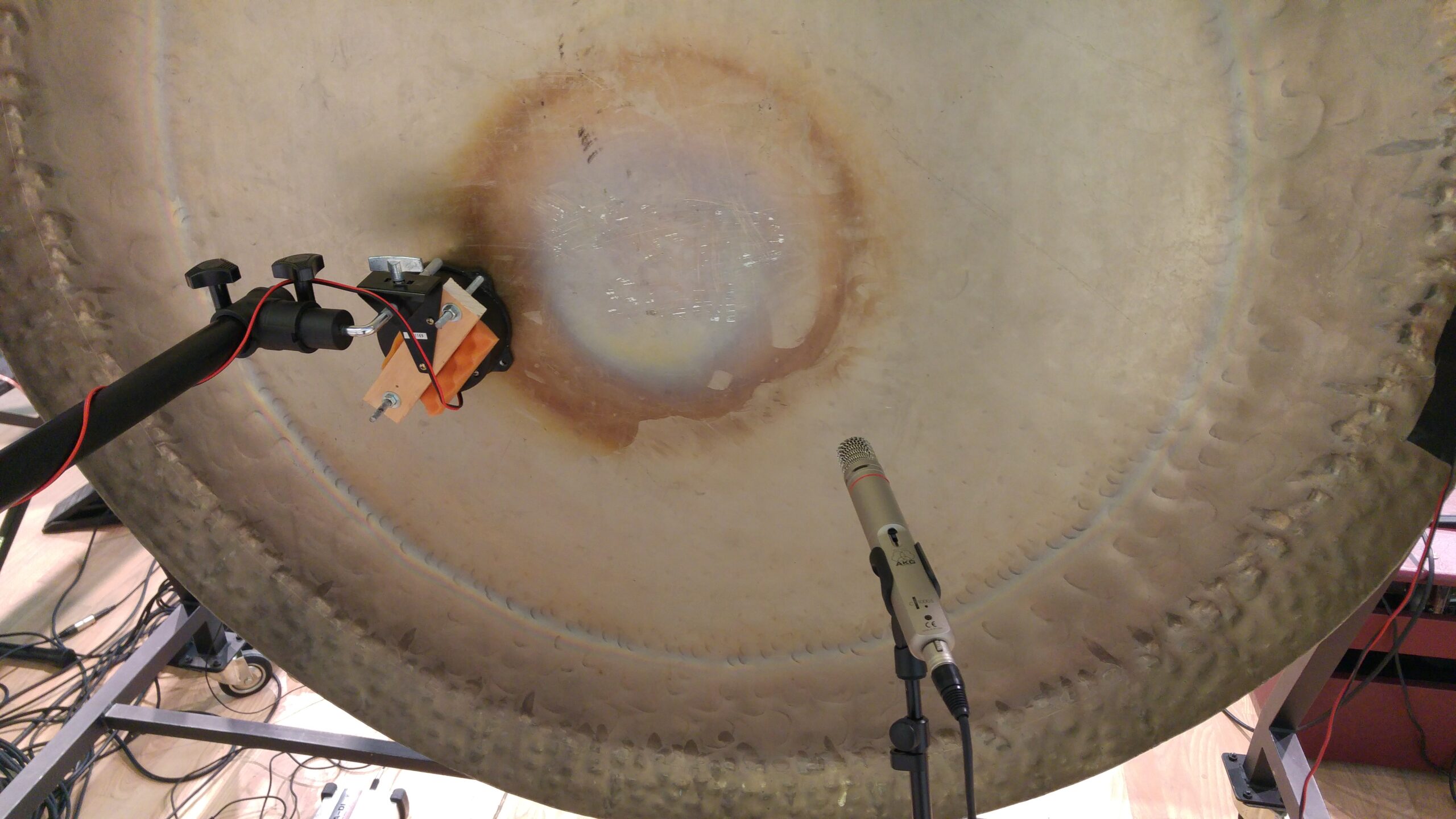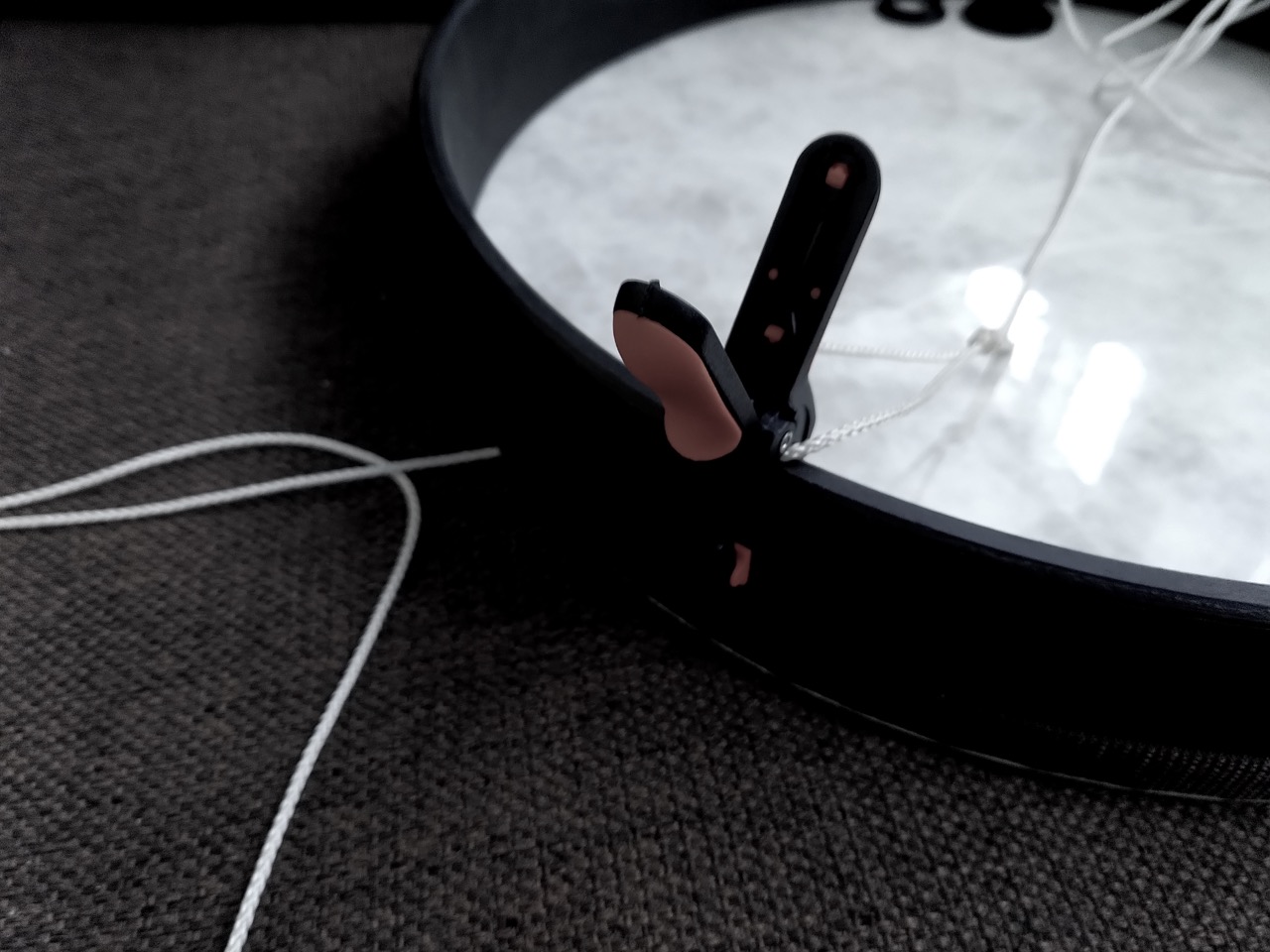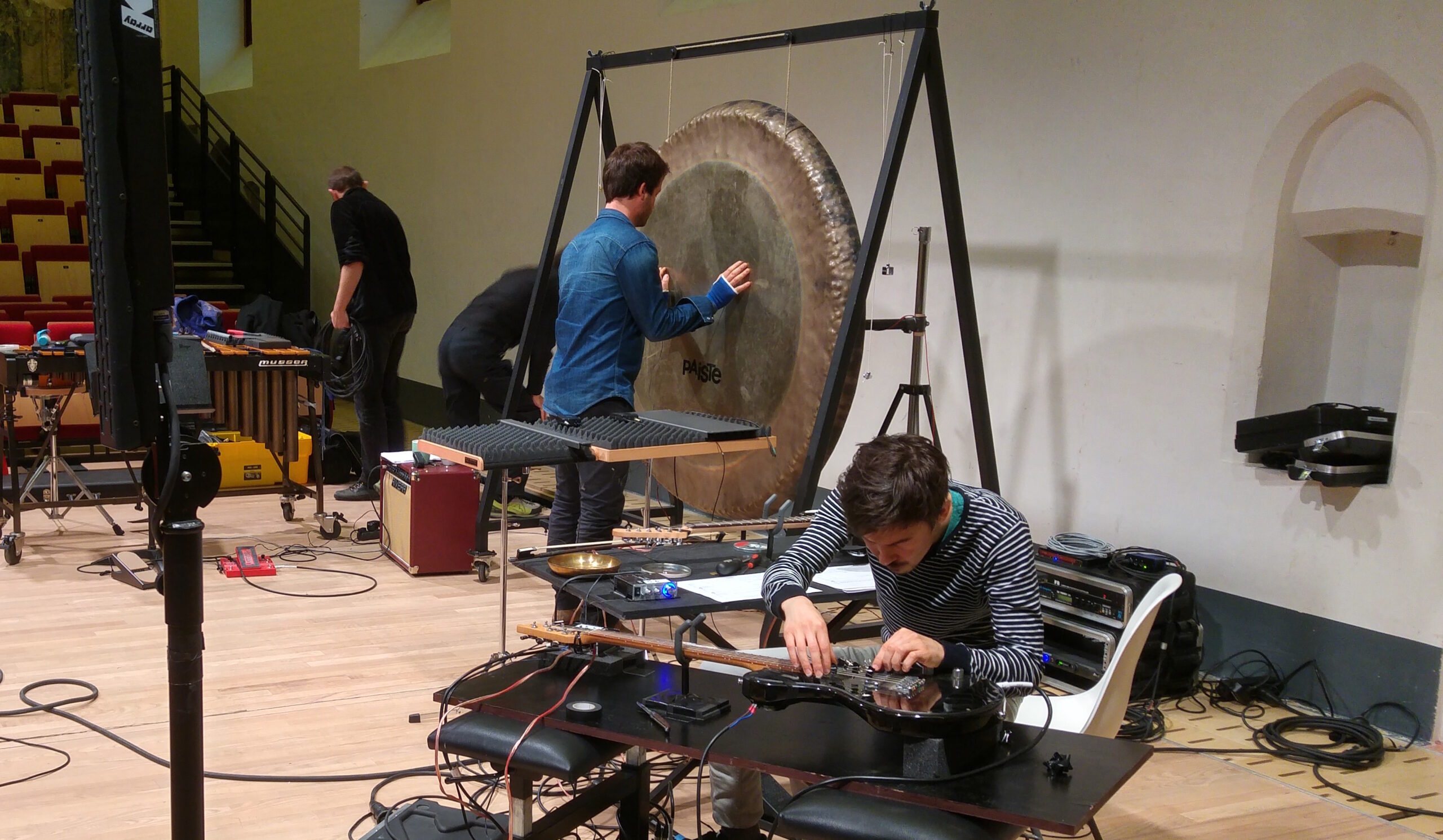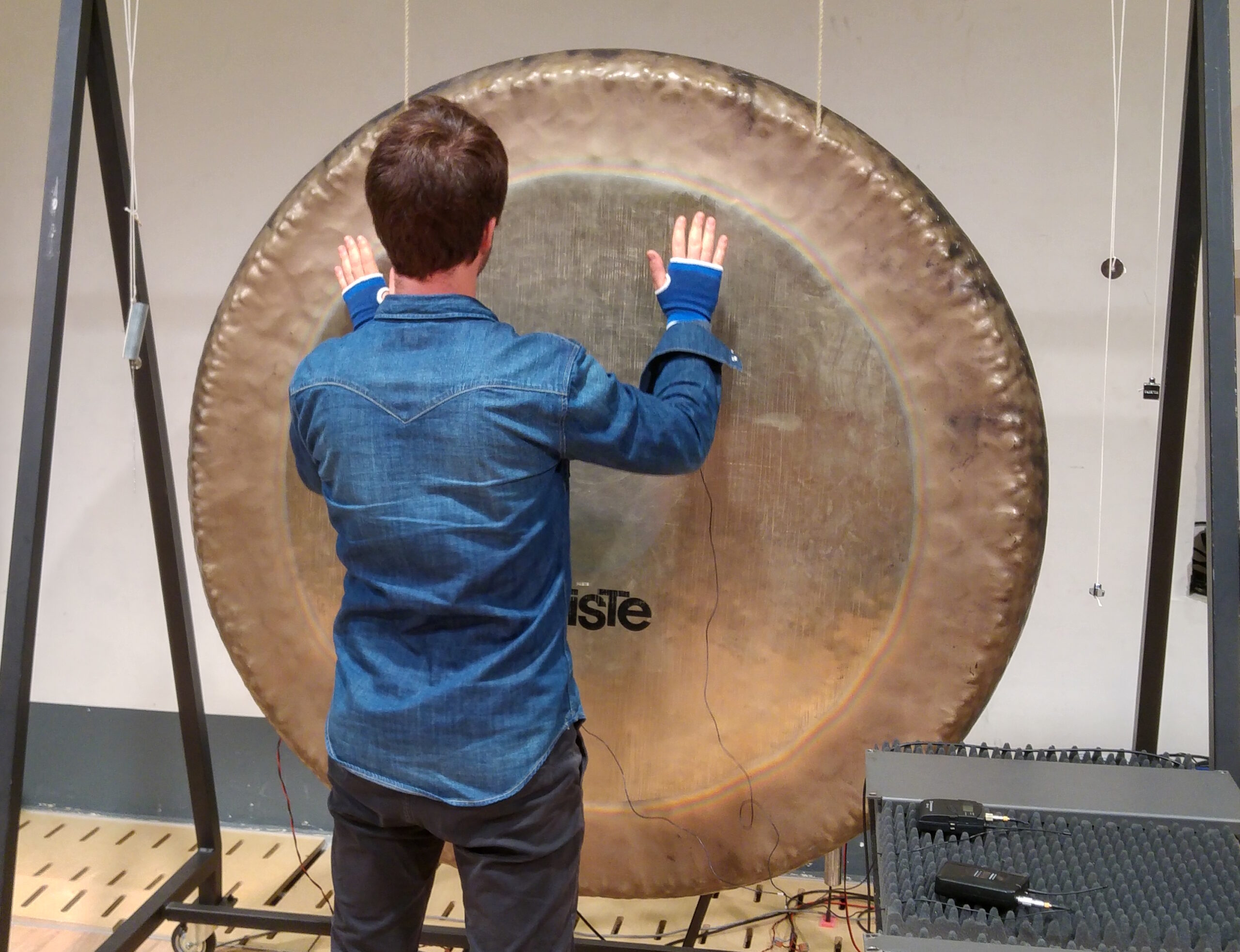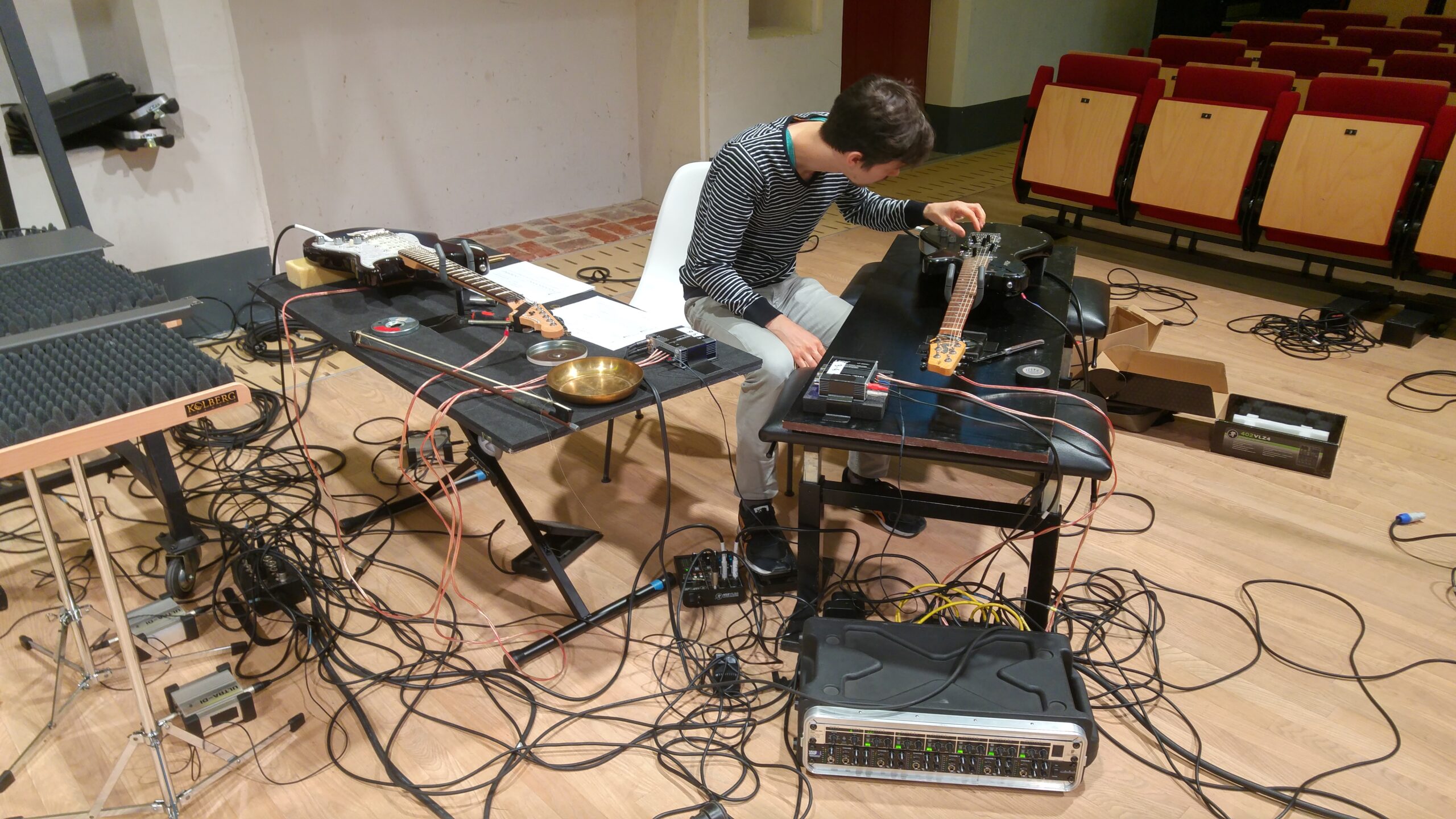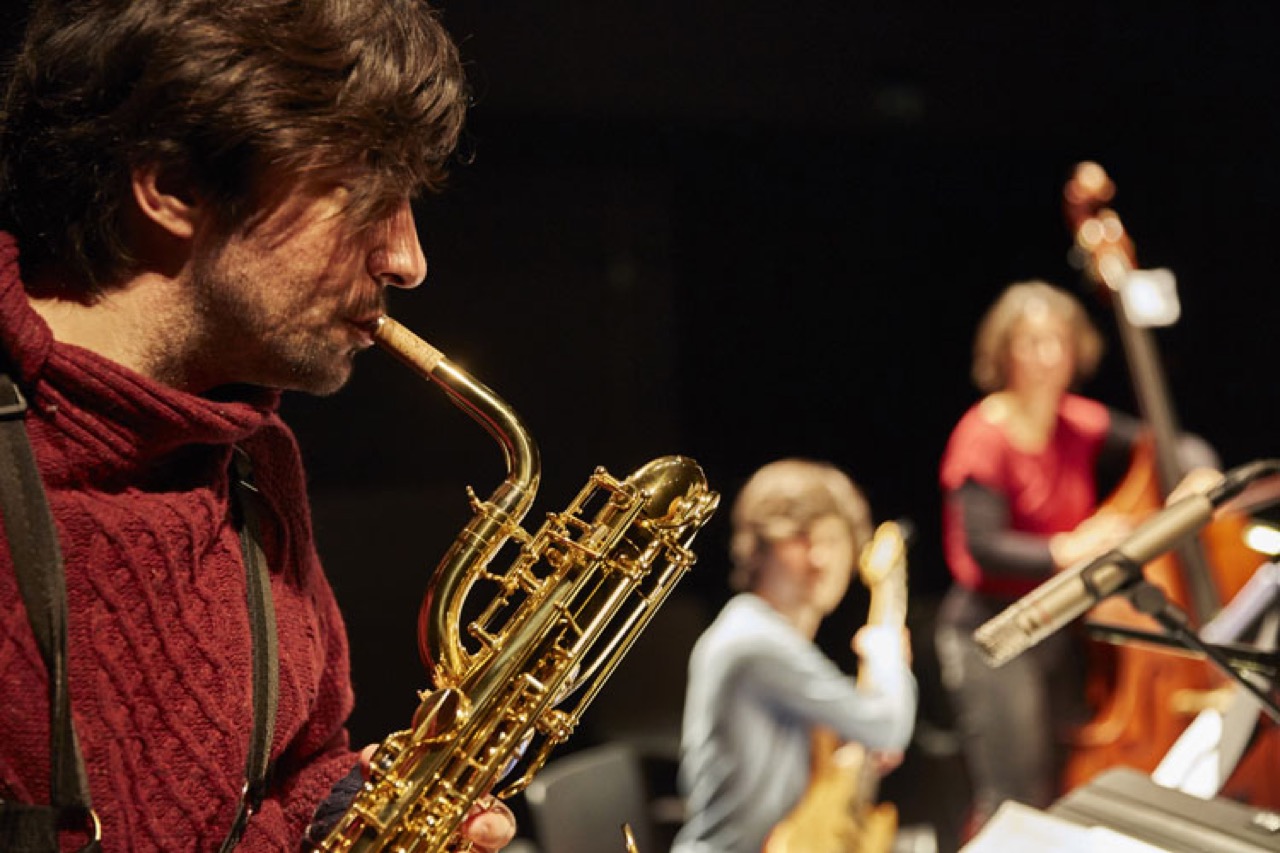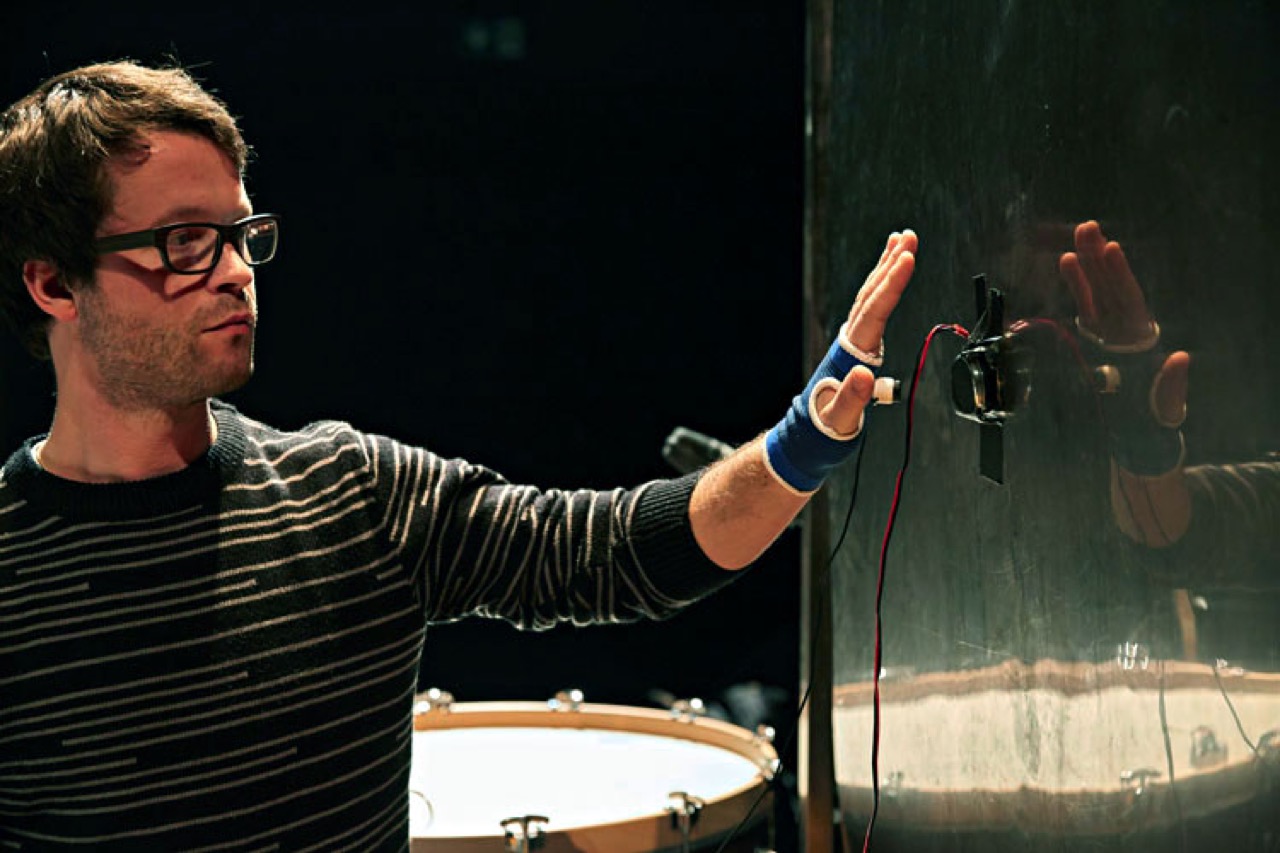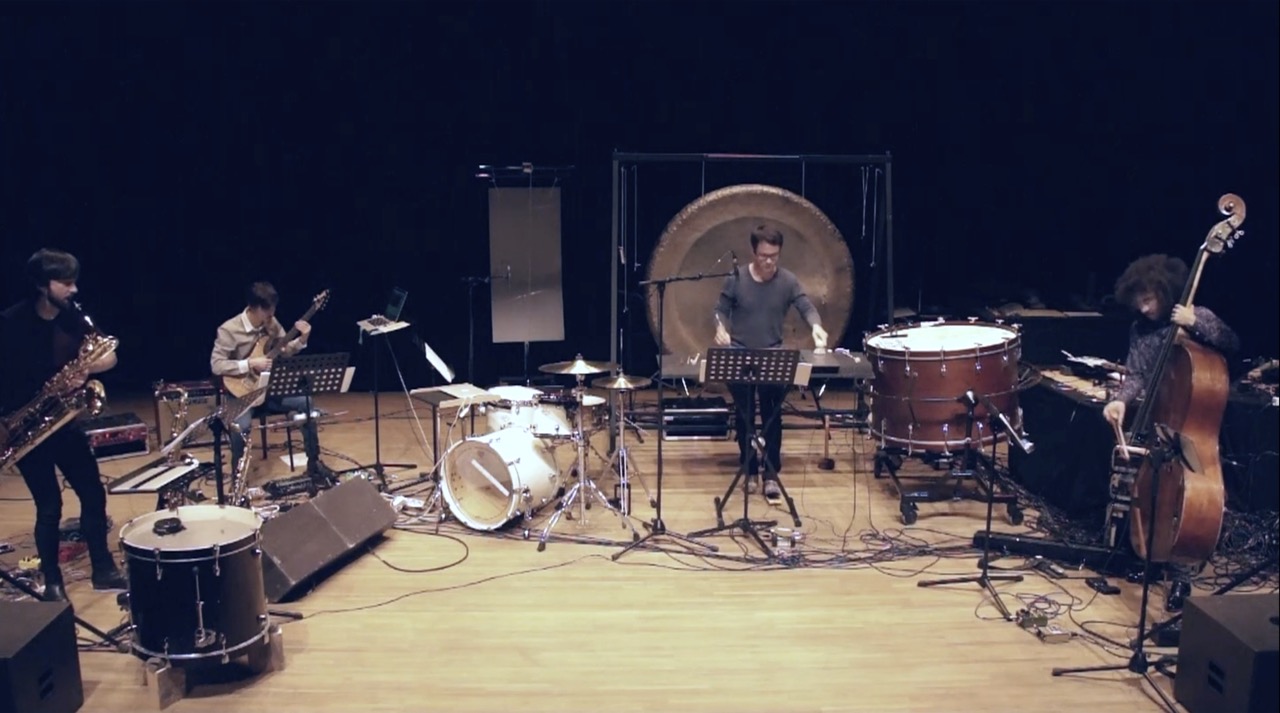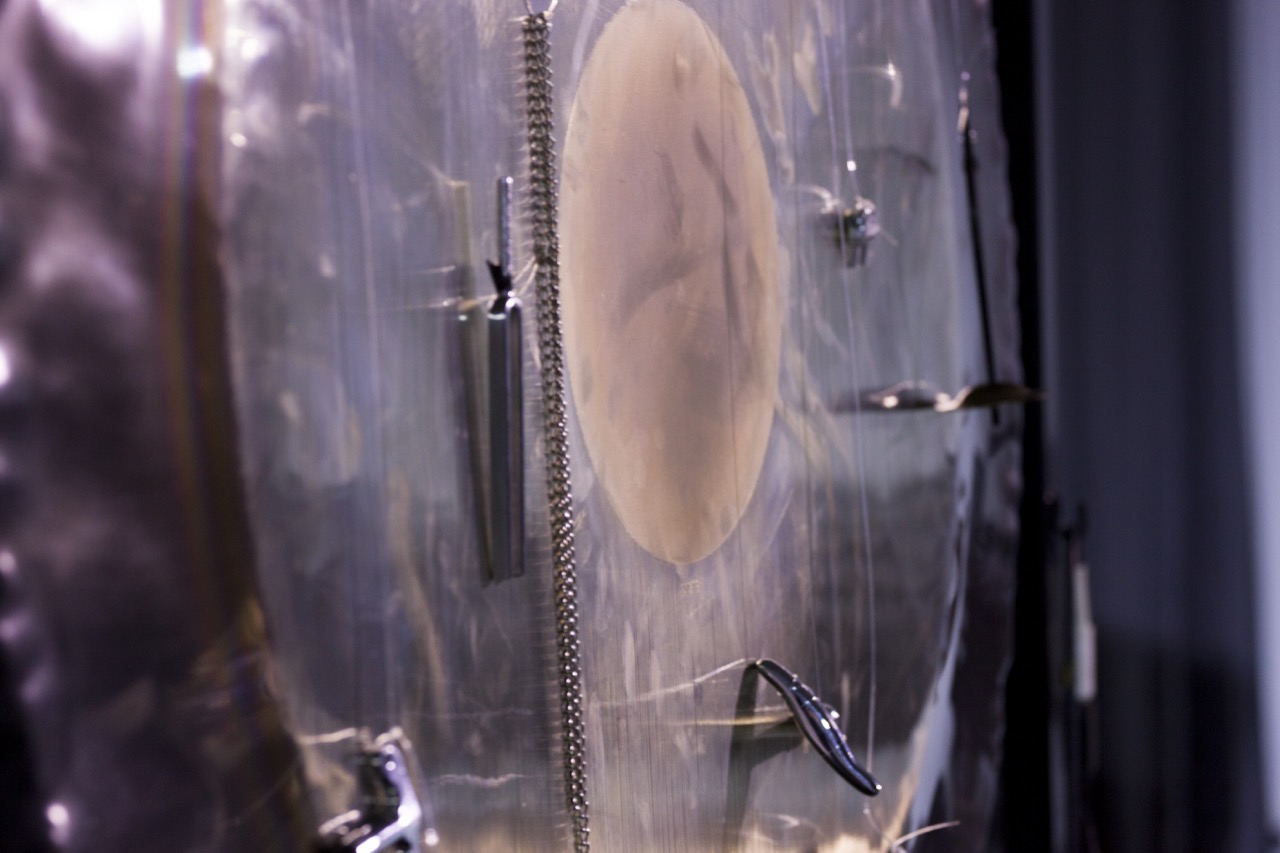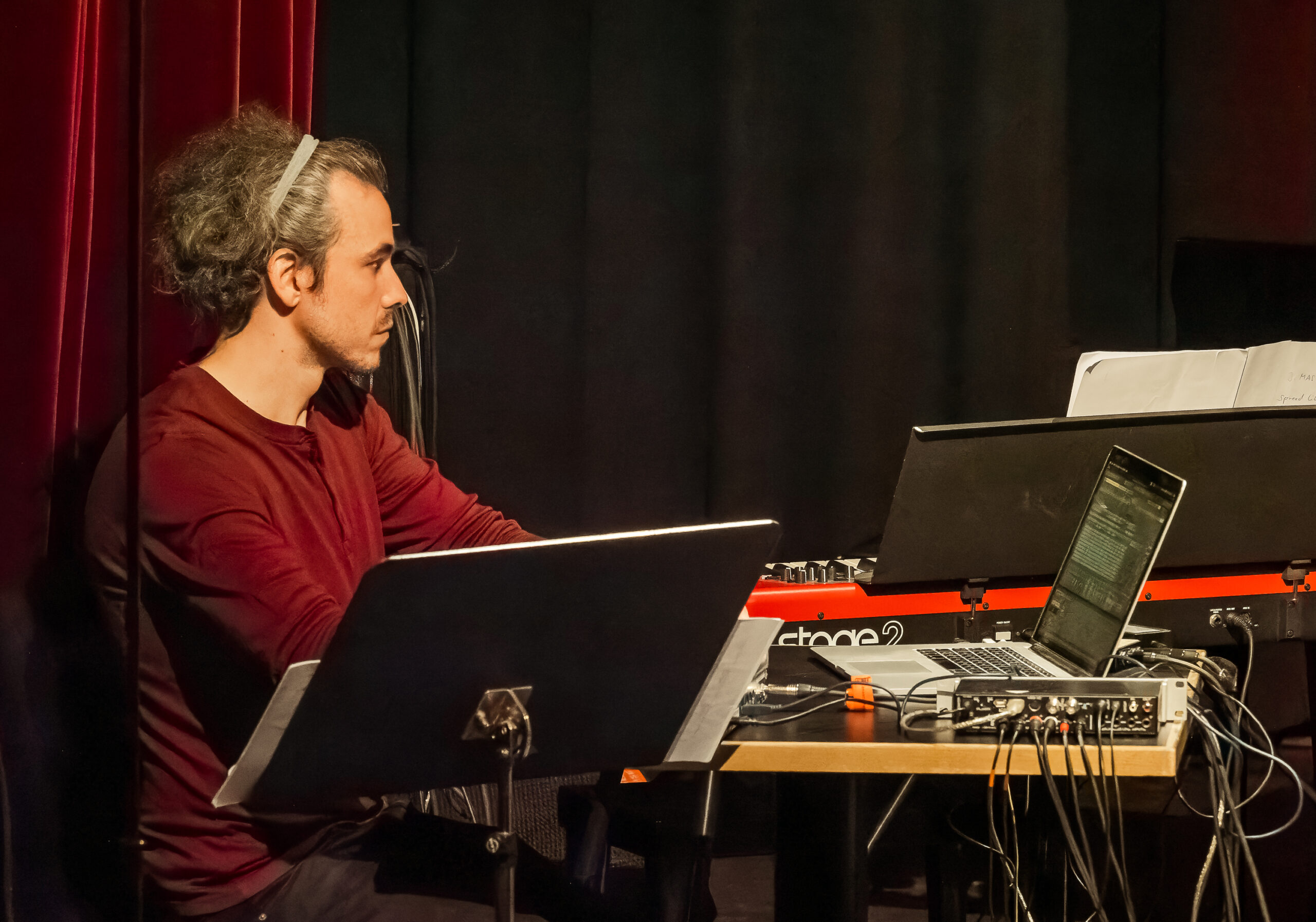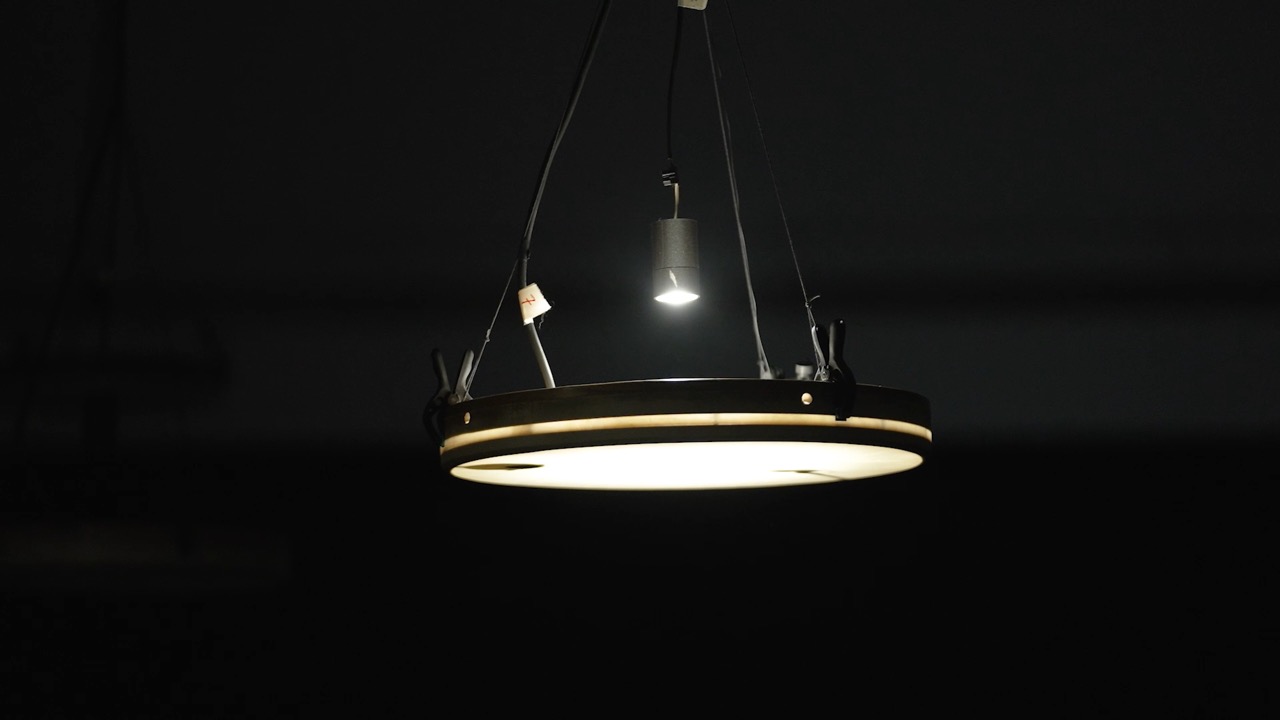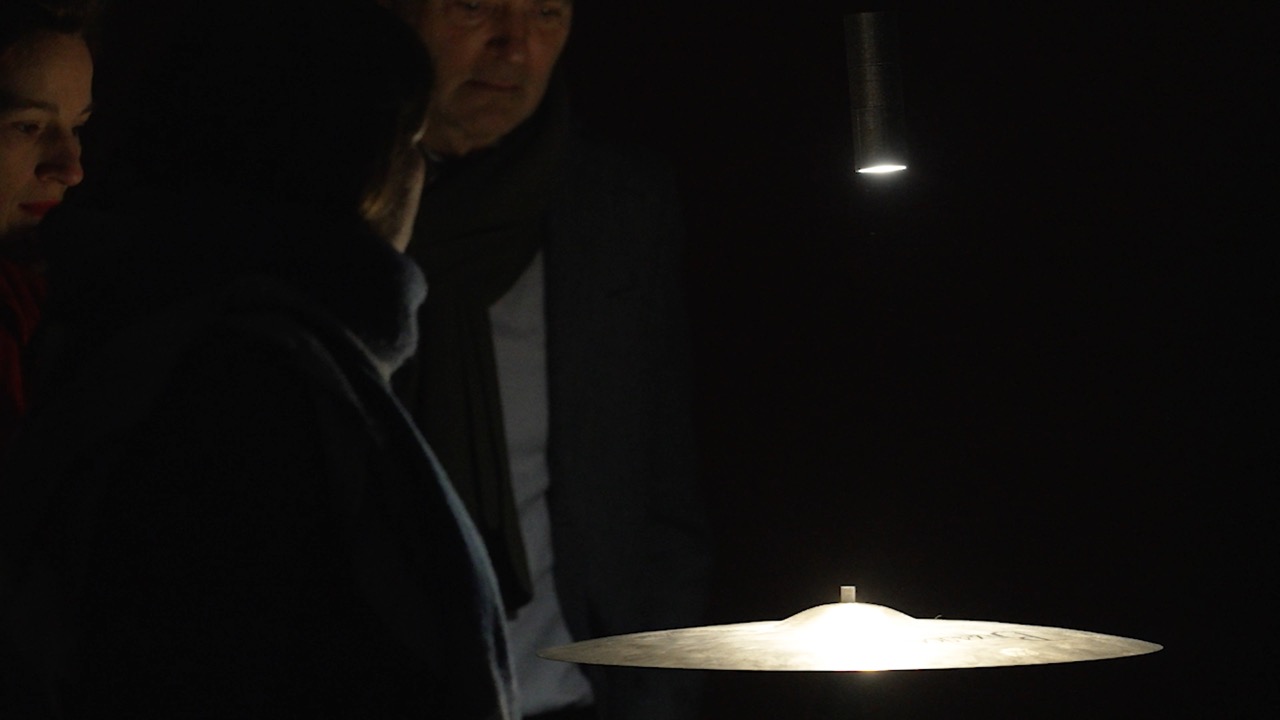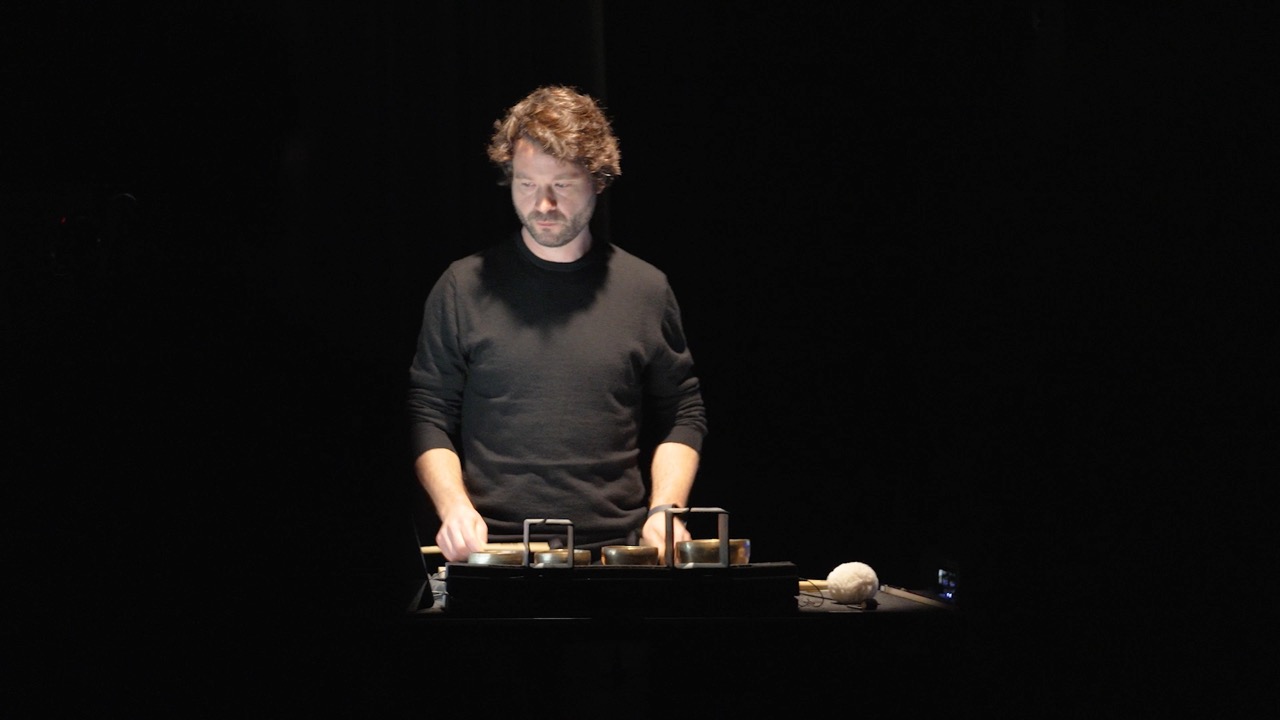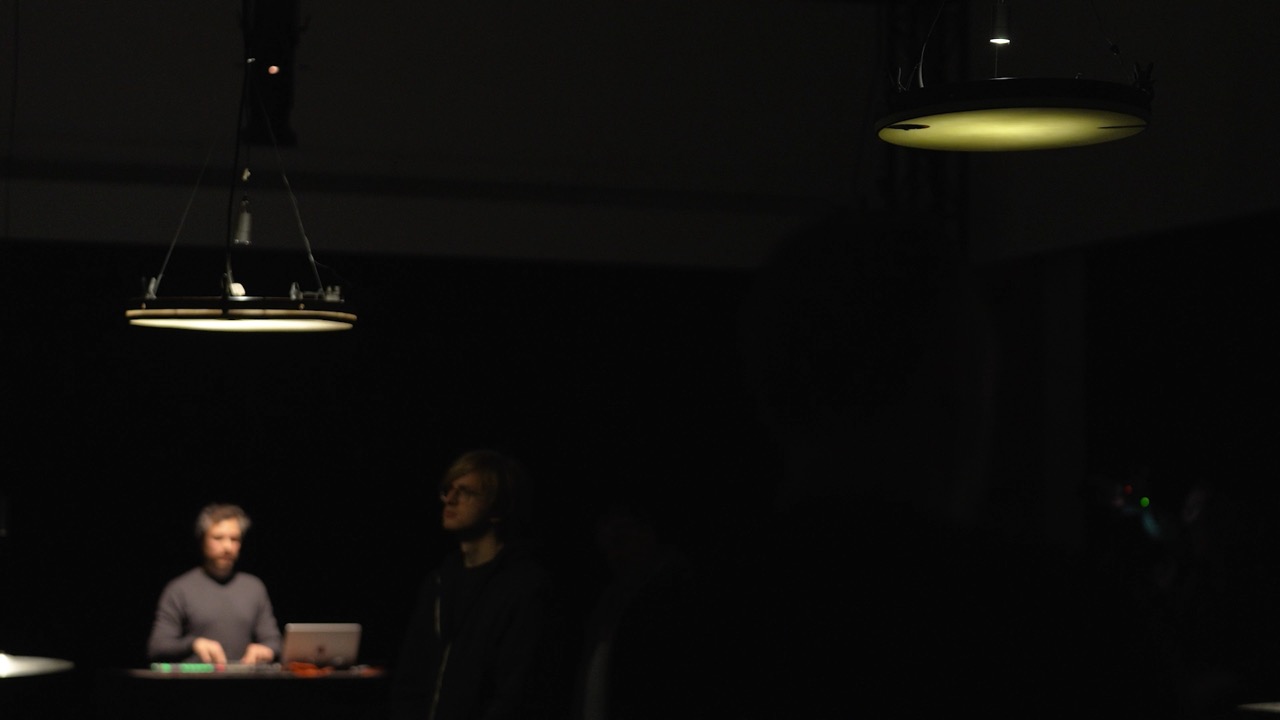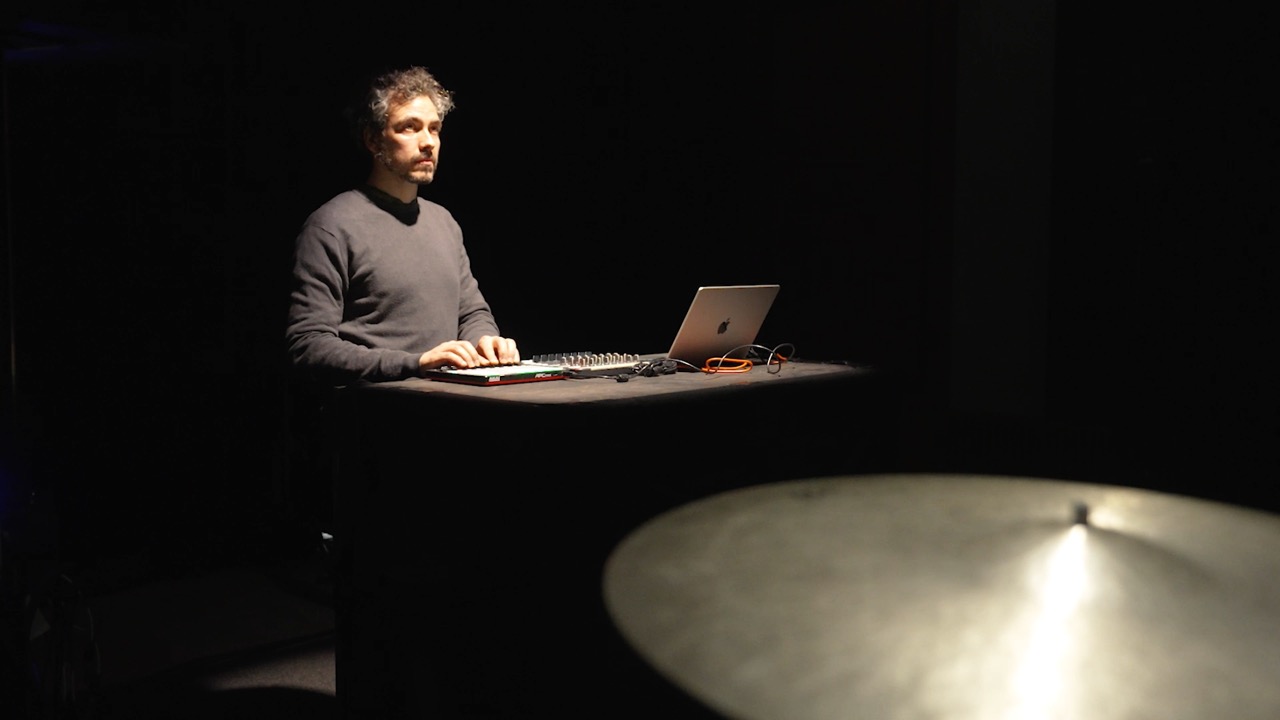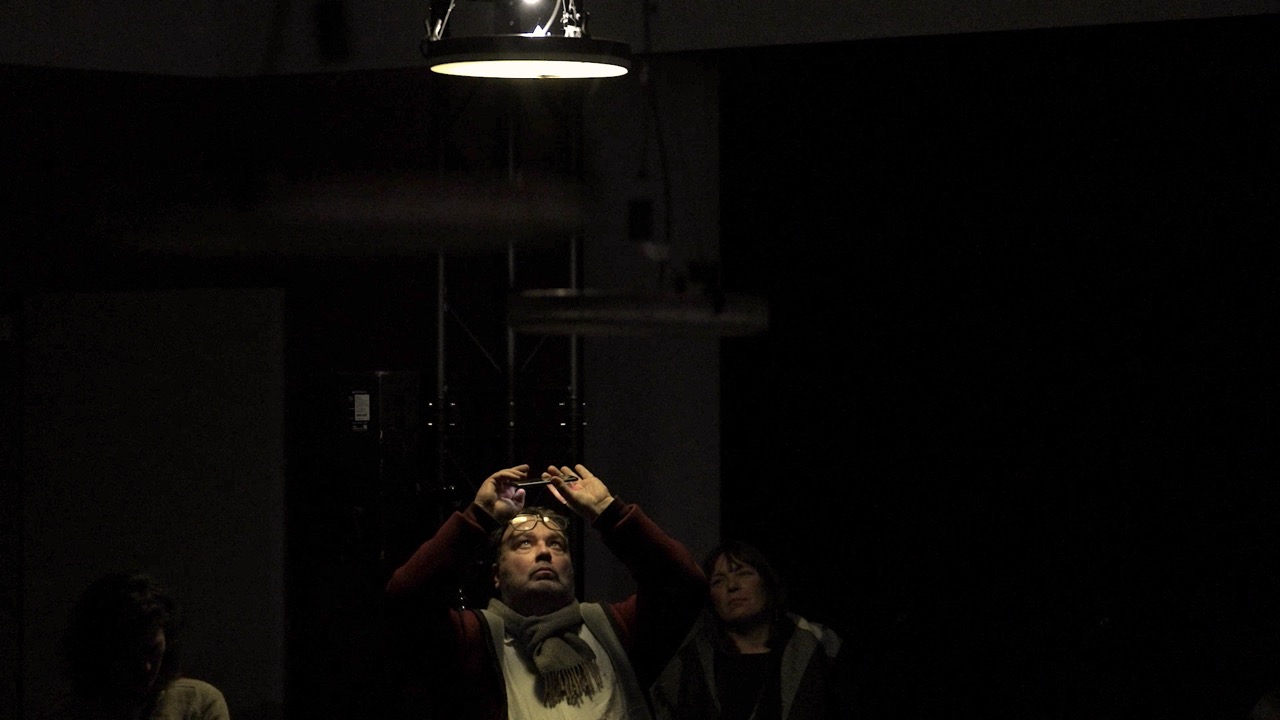The Autophagy cycle consists in a series of three works exploring the performative potential of self-regulating acoustic systems and hybrid instruments. Each piece investigates feedback as a compositional and performative force, using electro-mechanical augmentation to transform conventional instruments into unpredictable sonic agents. The cycle includes:
- Autophagy I: A quintet for augmented baritone saxophone, electric guitar, percussion, double bass, and electronics.
- Autophagy II: A trio for tabletop electric guitars, tam-tam, and electronics.
- Autophagy III: A modular composition for micropercussion and live electronics, accompanied by an installation of 16 feedback instruments. Written together with Tom De Cock.
Across the cycle, the works share a common interest in the activity of composing as a process of creating conditions for sonic phenomena to emerge in a process of negotiation between performers, instruments, and spaces.
Year: 2025
Production: Production
Collaborators: Names
Duration approx. 20′ – 30′
A quintet for augmented baritone saxophone, electric guitar, percussion, double bass, and live electronics. The piece integrates improvisation and feedback systems to explore instability and allow for different versions to emerge every time. The performance process involves working with specific performers, who contribute to the final outcome through improvised sections. The electronics and acoustic instruments form a self-modifying ecosystem, with feedback loops between players, devices, and even performance space. The work challenges conventional notions of reproducibility and emphasizes the living nature of sound.
Year: 2016-2021
Production: Centre Henri Pousseur – De Bijloke
Collaborators: Maarteen Stragier, Tom De Cock (premiere) – Adrian Pereira, Roland Neffe – Ruben Mattia Santorsa, Federico Tramontana
Duration approx. 25′
A trio for actuated tabletop electric guitars, tam-tam, and electronics. The instruments are augmented with DIY electro-mechanical systems that allow sustained sound through feedback. This setup alters the instruments’ behavior, bypassing traditional performance techniques and requiring a process of research of new modes of interaction together with the performers. The piece explores the instability of feedback as a compositional tool, where small physical changes in the setup, different instrument exemplars in the hands of different performers can produce radical sonic transformations.
Year: 2024-2026
Production: Production
Collaborators: Kone Foundation, Centre Henri Pousseur, Concertgebouw Brugge
Duration approx. 45′ – 1h
The final chapter of the Autophagy cycle composed togheter with percussionist Tom De Cock for micropercussion – De Cock’s custom instrument – and live electronics. The work, in between a piece and an installation is modular and designed to be performed in different configurations depending on the place of performance. The two musicians perform together with an installation of up to sixteen feedback instruments between actuated cymbals and drums spread around the audience and creating an immersive sonic environment. The work continues the cycle’s exploration of self-regulating acoustic systems electroacoustic lutherie and unstable DIY instruments. It was premiered at Concertgebouw Brugge in 2024 and reflects both musicians’ ongoing research.


